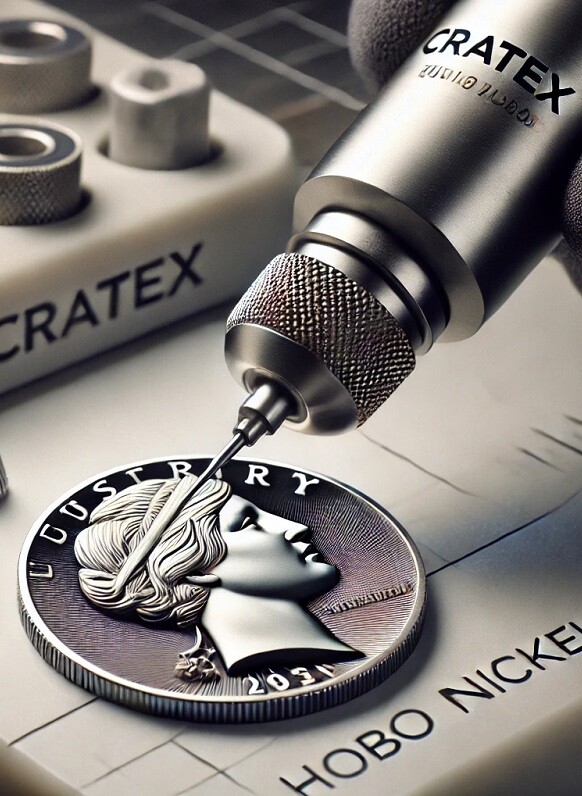Hobo Coin Art | CRATEX Abrasives
This article is part of Hobo Nickel – Remarkable Coin Art series.
For full article click here
Have you ever seen one of those cool carved coins with images of E.T., John Wayne or a skeleton chief? Maybe not, or maybe you have seen people do this, take coins and carve their own designs into the surface of a coin, but you never really wondered what it is and how it’s done exactly. Well, you should know that there is a whole special art world of hobo coins or hobo nickels out there that’s been around since the 18th century.
So. What is Hobo Nickel?
It is a creative and unique way to modify small-denomination coins by carving various shapes into their surface. The US nickel coin was favored by the hobo nickel artists primarily for its size and, therefore, the size of the surface that can be carved, its thickness and softness (with an exception of a couple of years around the WWII, the composition of a nickel coin remained unchanged since 1866 - 75% copper and 25% nickel). However, hobo nickel art doesn’t apply explicitly to nickel coins, but various other denominations as well, meaning that just about every coin can and has been carved at some point.
Are hobo nickels illegal?
The short answer: No.
The long answer: The U.S. Code determines fines and imprisonment for those who fraudulently alter or falsify “coins coined at the mints of the United States” and those who possess such coins, but since the purpose of altered hobo coins is purely artistic and not to commit fraud, it’s completely legal. You’re free to create your own designs and to sell the coins for prices you determine.
Why Hobo Coin?
There are quite a few theories how the name came into existence. The first theory is that the hobo coin got its name since it was a popular medium among actual hobos. It is believed that hobos began to appear after the American Civil War when a lot of war veterans got discharged. The term hobo dates back to around 1890 and it was used to describe a migrant or homeless worker traveler. One of the stories is that hobos used to earn about $1 a day for their work, so they took coins (usually nickels) and added fun designed in order to raise their value. They would then trade the modified coins for food or a place to stay, making the dollar last for a whole week or more. Nickels were easy to carve due to their size and plus, they had relatively low value. Quarters had a much larger surface, but were five-times more valuable, so modifying them was not an option for a homeless vagabond.
Others say that the name dates to the period of Great Depression, when a lot of unemployed and homeless men traveled through countryside in the pursuit of available sessional work. Same as the post-Civil War hobos, these men hopped into freight trains, traveled around and used which ever tools they found in their pockets to carve their designs and to exchange them for food or a place to stay.
Another story dates back to WWI when more than three million American solders passed through Hoboken, a city located in the state of New Jersey, which was then the main port for Expeditionary Forces. To pass their time, solders carved their designs into the nickels.
Other names for the art are “prisoner nickels”, “trench art”, “bum nickels” or they are referred to as “reworked” or “transformed”.
